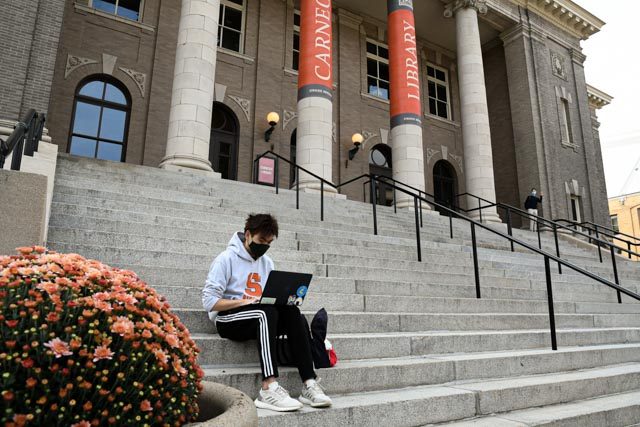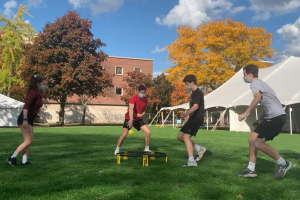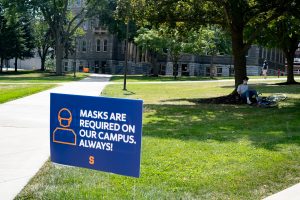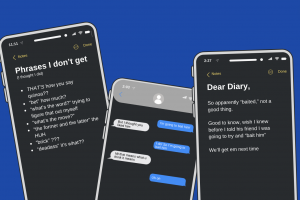No spring break poses mental health risk for students
No spring break poses mental health risk for students

Heading to class today on what would have been spring break, students have mixed feelings regarding Syracuse University’s decision to remove the semester’s one break in order to prevent students from traveling and breaking pandemic restrictions.
In terms of giving students time to unwind, the university gave two designated wellness days: Tuesday, March 23, and Wednesday, April 21. While having some wellness days has been deemed favorable by many students, having two sporadic days off in exchange for what used to be a time for travel and recharge with friends and family is not a fair trade.
Stefanie Raichelson, Ph.D., a mental health professional based in Westchester, New York, stresses the importance of considering college students as individuals and not as a collective group of young adults that process and cope in the same way.
“There are no ways to generalize what helps kids to be more resilient under tough circumstances than others. It is important that we understand when we speak about consequences, they will be different for different kids,” Raichelson said.
Raichelson works with many college students and said that over the course of the past year, many students have felt a “collective grief for the things that we’ve lost.” While this applies to people of all ages and experiences, students, in particular, have missed many important milestones in their academic careers due to the pandemic.
The lack of control over the calendar and the inability to plan things to look forward to are major factors in struggling to get through the semester, Raichelson said.
“It is not just a week off from school that has meaning, but the mood boost around choice and around planning. We often just get excited if we think we have a break, even if we don’t do anything,” Raichelson said.
Kayla Lohman, a newspaper and online journalism sophomore at SU, said that without consecutive time allotted to rest and take time away from the academic calendar, it is going to make getting through the semester very arduous for students.
“As a person with anxiety, I think it’s going to be a marathon,” Lohman said, “and you’re just waiting for the end of the semester now that we don’t have anything in the middle to break it up.”
“There is a big difference between having a day off in the middle of the week and having time to recover from the stress of being a student and recuperate,” said Theresa Hobbs, a licensed social worker who specializes in providing psychotherapy and counsels a number of SU students.
When speaking to students, Hobbs recognized that there are still plenty of obligations that students must honor during their limited days off, making the experience anything but relaxing.
“You still have homework, you still have deadlines, it’s due the day after what you call ‘rest and recovery days,’” Hobbs said. “It’s not an appropriate amount of time off. It really isn’t a break.”
Audrey Prater, a neuroscience sophomore at SU, said she feels disappointed due to the cancellation of this year’s spring break. Unable to visit her friends in Puerto Rico due to the COVID-19 outbreak during last year’s spring break, Prater said she was hoping the situation would be improved for this year. While it is disheartening to Prater that the virus is continuing to prevent socialization and relaxation, she said it makes sense why the university is taking precautions against travel.
“I feel like what they’re doing is safe by canceling spring break because COVID is still very present and it’s a scary thing,” Prater said, “but I feel like it’s beneficial to have spring break because that’s when everyone gets to relax and not focus on anything.”
The wellness days will most likely be utilized to continue completing assignments, as opposed to rest, said Lang Delapa, an advertising freshman at SU.
“I was happy that they did pay attention to the needs of the students, but I honestly don’t think that they will do much,” Delapa said. “I’ll probably use that time to catch up on other work instead of relaxing. Plus, professors might assign extra work near those days to make up for lost time.”
For students like Delapa, the nonstop workflow and inability to take time away from the constant stressors of schoolwork could make the wellness days feel more like homework days. The inconvenience of the dates falling mid-week in both cases is a concept that could prevent students from utilizing the time for a mental health recharge, and instead place pressure to get ahead in order to survive the remainder of the week.
“The university has not really had the pulse on the fingertips of what kids need recovery from, and so our minds are susceptible to burnout, which is a type of stress associated with prolonged work because we are under the thread of too much stimulation,” said Raichelson.
To challenge the hardships students face this semester, Raichelson poses the question: “Even in the absence of spring break, what can we do to ground ourselves in both our identity and our response to this moment?”
In her opinion, mental health and physical health should be prioritized every day. If both are attended to on a regular basis, Raichelson said she believes “we can then mitigate some of these damages.”
Although there is not a week off from classes this week, students must take longer breaks from stressors and focus on their mental health in order to take preventative measures against burnout this spring.







